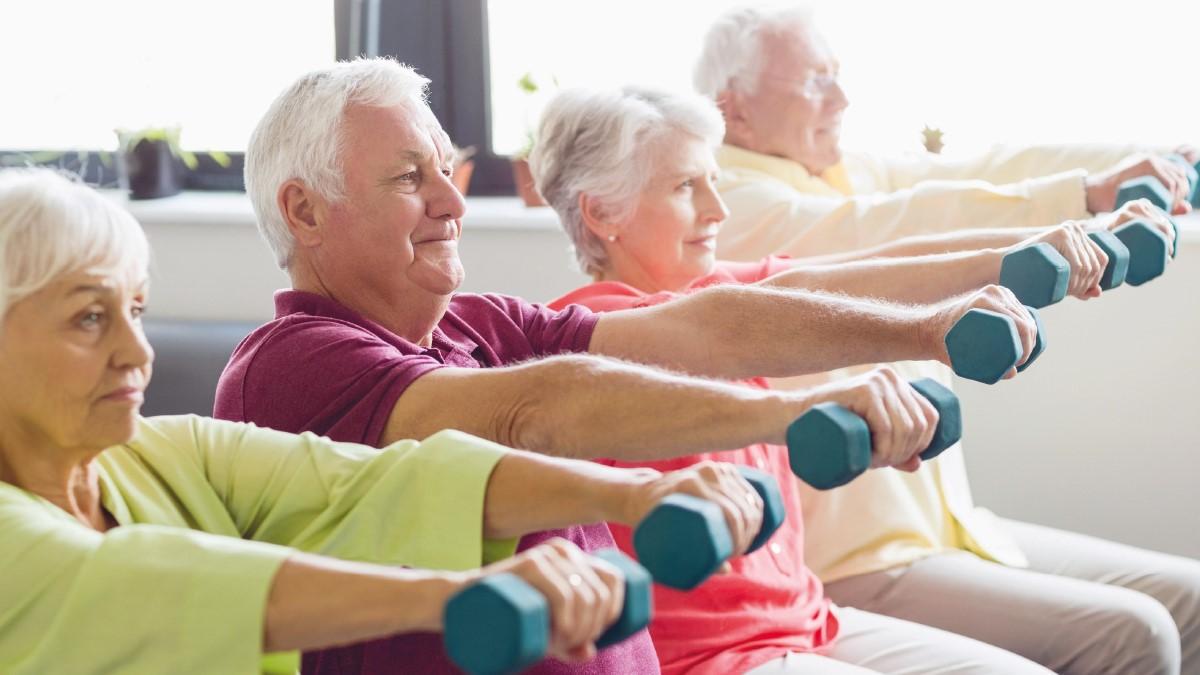Data from 2012 indicated that 32,500 people in the UK had idiopathic pulmonary fibrosis.

Why was this study needed?
Data from 2012 indicated that 32,500 people in the UK had idiopathic pulmonary fibrosis. This is an increase on previous estimates, which could be due to improved recording of the condition. It mostly affects men over 40 and is more common in north west England, Scotland, Wales and Northern Ireland. Average survival following diagnosis is only three years.
There are two drugs approved to treat idiopathic pulmonary fibrosis: pirfenidone and nintedanib.
IPF mostly affects men aged 40 and over
They can slow progression, but do not reverse it. Rarely will people be suitable for lung transplant. Otherwise care is supportive, centring upon oxygen therapy and pulmonary rehabilitation.
But to date, there has been little clear evidence that pulmonary rehabilitation improves outcomes.
This systematic review aimed to pool results from all available trials assessing whether pulmonary rehabilitation improves exercise tolerance and quality of life in people with idiopathic pulmonary fibrosis.
What did this study do?
The review and meta-analysis identified five randomised controlled trials comparing pulmonary rehabilitation with usual care in 130 people with idiopathic pulmonary fibrosis. Trials were small, with sample sizes ranging from 21 to 32. Average participant age was 67 years, and most participants were male.
Pulmonary rehabilitation differed across trials, variably including treadmill training, cycling, flexibility and strength training, often performed at 50-80 per cent maximum heart rate. Programmes typically involved 60-90 minute sessions twice weekly for 10 -12 weeks.
Trials were published from 2008 to 2015 and were of moderate quality. None were from the UK. In all studies, participants and assessors were aware of treatment given. Only a single trial analysed all participants in their assigned group regardless of whether they had completed treatment.
What did it find?
People who received pulmonary rehabilitation were able to walk 44 metres further on the six-minute walk test than those having
usual care (95 per cent confidence interval [CI] +5.3 to +82.8 metres; four trials, 113 people).
Pulmonary rehabilitation improved quality of life on the 50-item St George’s Respiratory Questionnaire, where a score change of
four or more is considered clinically meaningful (mean difference [MD] -7.4, 95per cent CI -10.7 to -4.1; four trials, 113 people). By
specific questionnaire section, rehabilitation improved symptoms (MD -18.5, 95per cent CI -26.9 to -10.1) and psychosocial
impact (MD -9.0, 95per cent CI -11.6 to -6.4). There was no meaningful effect on activity levels (MD -1.25, 95per cent CI -1.25 to
+0.11).
No studies reported any side effects of pulmonary rehabilitation.
What does current guidance say on this issue?
The National Institute for Health and Clinical Excellence (NICE) guideline on idiopathic pulmonary fibrosis recommends that the need for pulmonary rehabilitation is assessed at the time of diagnosis, usually by the six-minute walk test and quality of life assessment. Assessments should be repeated at six to 12-monthly intervals. There is a specific recommendation for rehabilitation if the person is breathless upon exertion, but not if at rest.
If indicated, pulmonary rehabilitation is advised to include exercise and educational components, and be tailored to the needs of the individual.
Separate NICE technical guidelines outline the specific patient eligibility criteria for the use of pirfenidone and nintedanib.
What are the implications of the NICE guidance?
At the time of its last guideline, NICE recommended a need for research into whether pulmonary rehabilitation improves outcomes in idiopathic pulmonary fibrosis.
The findings of this review are positive, but show that the evidence remains quite limited. To provide effective and individually-tailored programmes for people with idiopathic pulmonary fibrosis, there is still need for continued research and follow-up.
There is a need to better understand the optimal content, intensity and duration of rehabilitation programmes. There is also a need to look to the longer term and see whether it improves lung function and survival for this condition with known poor prognosis.
Commentary
Rachael Colclough
Pulmonary Rehabilitation (PR) is a programme of group education and exercise tailored to individual patients. It is one of the most clinically and cost effective interventions for patients with respiratory conditions. Specifically evidence-based for patients with chronic obstructive pulmonary disease, it is pleasing to see the substantial health gains translate to patients with pulmonary fibrosis.
Pulmonary fibrosis is an umbrella term for a collection of diseases which cause scaring of the lungs and leads to significant breathlessness, the most common is idiopathic pulmonary fibrosis (IPF).
A significant proportion of the NHS Long Term Plan is dedicated to respiratory long-term conditions and PR features heavily. The Cochrane Review beautifully highlights the benefits of PR for COPD: ‘PR significantly improves exercise capacity, relieves dyspnoea and fatigue, improves emotional function and the sense of control that individuals have over their condition’.
Evidence for PR for IPF may be small in size and number however the impact on individuals who have attended PR is huge and is not to go unrecognised.
For patients with pulmonary fibrosis physiotherapists can provide them with an environment where they can explore their ability, share strategies and build in confidence as well as strength, empowering them to face their diagnosis to the best of their ability.
The challenge for physiotherapists is to deliver and adapt PR for different lung conditions, responding to increasing demand without impacting on quality and outcomes.
Citation and Funding
Gomes-Neto M, Silva CM, Ezequiel D, et al. Impact of Pulmonary Rehabilitation on Exercise Tolerance and Quality of Life in Patients With Idiopathic Pulmonary Fibrosis: A Systematic Review And Meta-Analysis. J Cardiopulm Rehabil Prev. 2018. [Epub ahead of print].
No funding was involved in the development of this systematic review. The full NIHR Signal and additional expert commentary was published on 13 March 2018.
- Rachael Colclough is a clinical specialist physiotherapist at Queen Elizabeth Hospital Birmingham and a long-term conditions champion, Association of Chartered Physiotherapists in Respiratory Care| longtermconditions@acprc.org.uk
Number of subscribers: 2




































